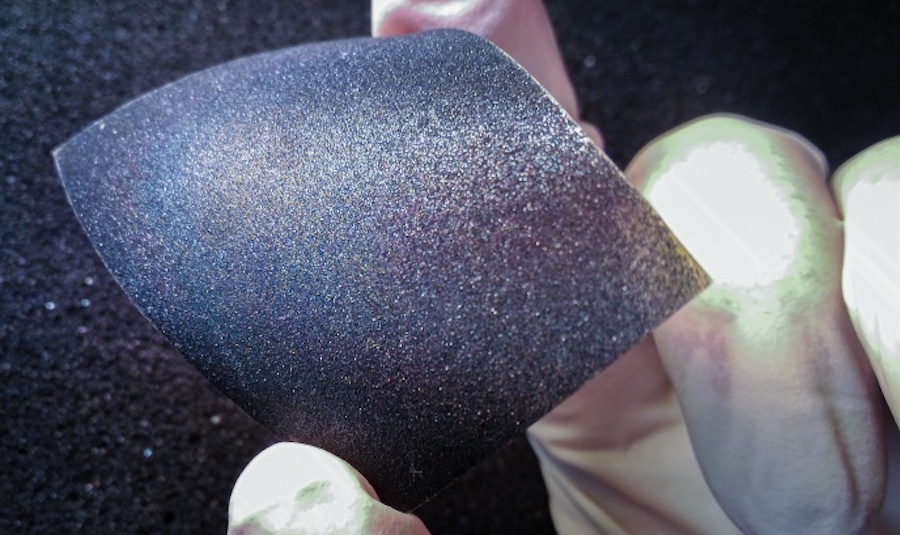 Next-generation lightweight flexible monograin layer solar cell developed by Taltech researchers. (Image by Jüri Krustok, courtesy of Tallinn University of Technology).
Next-generation lightweight flexible monograin layer solar cell developed by Taltech researchers. (Image by Jüri Krustok, courtesy of Tallinn University of Technology).
In a study published in the Journal of Materials Chemistry A, the scientists explain that their goal is to develop the next generation of thin-film solar cells based on compound semiconductors.
A thin-film solar cell consists of several thin layers of semiconductor materials. For efficient thin-film solar cells, a semiconductor with very good light-absorbing properties must be used as an absorber. Thus, the Estonian researchers created compound semiconductor materials named kesterites (Cu2ZnSn(Se,S)4) which, in addition to excellent light absorption, contain minerals such as copper, zinc, tin, sulphur and selenium.
To produce kesterites, the researchers used a unique monograin powder technology.
“The monograin powder technology we are developing differs from other similar solar cell manufacturing technologies used in the world in terms of its method. Compared to vacuum evaporation or sputtering technologies, which are widely used to produce thin-film structures, the monograin powder technology is less expensive,” senior researcher Marit Kauk-Kuusik said in a media statement.
Powder growth technology is the process of heating chemical components in a special chamber furnace at 750 degrees for four days. Thereafter, the mass obtained is washed and sieved in special machines. The synthesized, high-quality microcrystalline, monograin powder is used for the production of solar cells.
The monograin powder consists of unique microcrystals that form parallel-connected miniature solar cells in a large module. This provides major advantages over the photovoltaic modules in the old-generation silicon-based solar panels. The photovoltaic cells are lightweight, flexible, can be transparent while being environmentally friendlier, less expensive and efficient.
“We have reached the point in our development where partial replacement of copper with silver in kesterite absorber materials can increase efficiency by 2%. This is because copper is highly mobile in nature, causing unstable solar cell efficiency. The replacement of 1% copper with silver improved the efficiency of monograin layer solar cells from 6.6% to 8.7%,” Marit Kauk-Kuusik said.